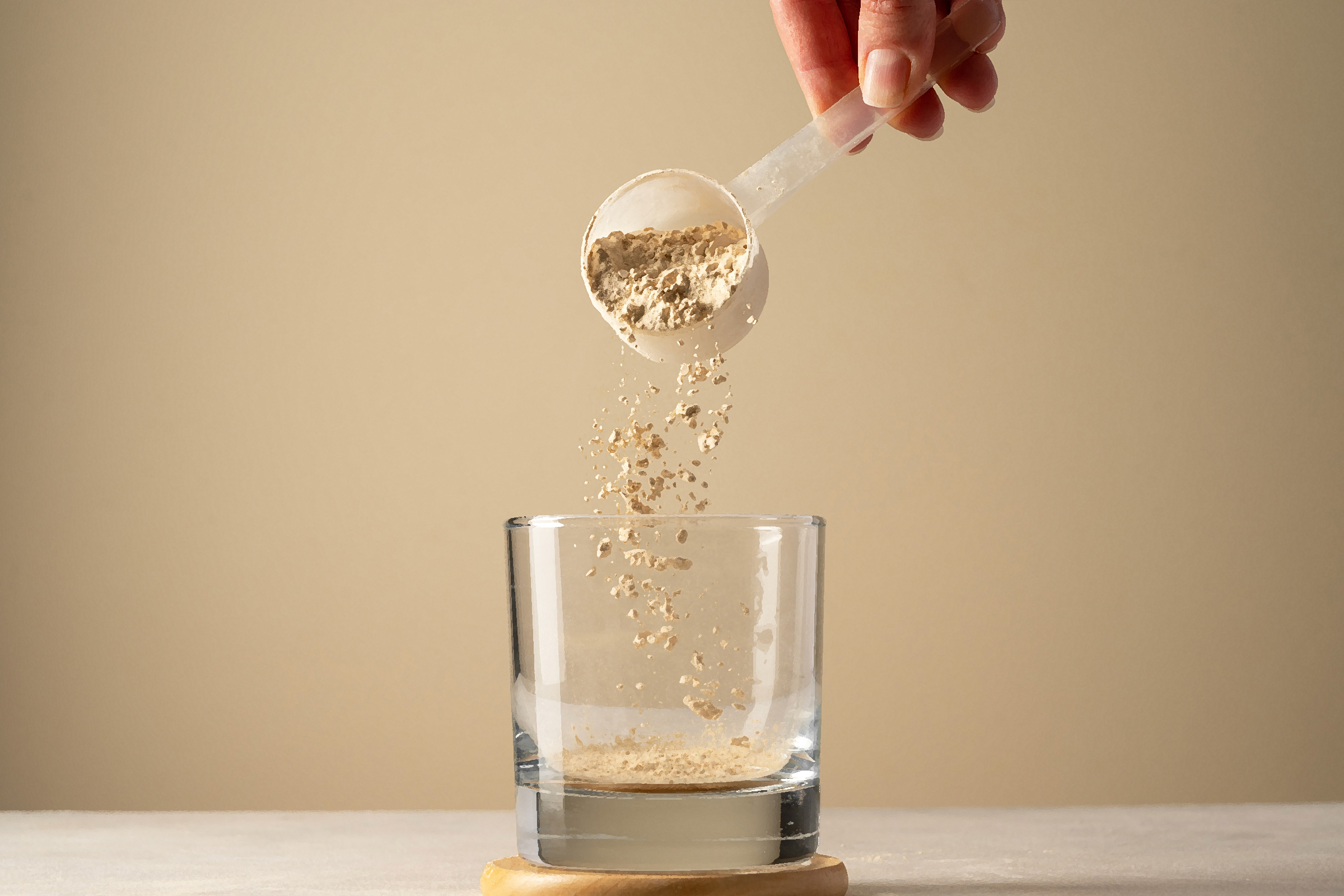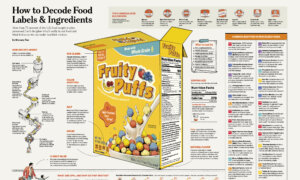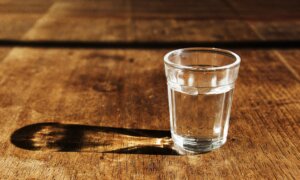Protein is an essential part of a healthy diet, yet many older adults are not getting enough of it.
One study, published in The Journal of Nutrition, Health and Aging, found that up to 46 percent of older adults get less than the daily recommended amount.
What Are the Benefits of Eating More Protein?
While early research showed that too much protein—particularly animal protein—could result in excess acid in the body adversely affecting bone health, long-term studies now show that high-protein diets can actually improve bone health. People who eat more protein tend to maintain bone mass better as they age and have a much lower risk of osteoporosis and bone fractures, particularly in post-menopausal women.
“Protein plays a key role in prevention of osteoporosis,” Jackie Newgent, a registered dietician and plant-based chef in the Brooklyn borough of New York City, told The Epoch Times.
Maintaining high levels of protein is crucial for vitality during the aging process, especially for women.
Higher protein meals have also been demonstrated to increase satiety more than those that are higher in carbohydrates and fats; this can help one to reach and maintain a goal weight by decreasing one’s appetite. One study, published in The American Journal of Clinical Nutrition, shows that increased protein intake “may facilitate a reduction in energy consumption under ad libitum [available at all times] dietary conditions.”
Eating more protein may also help to stave off cravings and late-night munchies. Overweight men who increased their protein intake to 25 percent of their calories had fewer cravings and were half as likely to snack late at night when compared with those consuming lower levels of protein, according to a study in the journal Obesity.
Another benefit of increased protein intake includes increased thermogenesis, which augments the amount of energy—and thus calories—that the body expends and also increases the possibility of retaining lean muscle mass and improving metabolic function.
A leaner physique may also help to extend life expectancy. One study in The American Journal of Clinical Nutrition shows that people in the highest 50 percent of lean body mass lived longer than those in the lower half.
The Best Types of Protein: An Ongoing Debate
There is much debate over the kind of protein that is best for people, particularly when it comes to animal versus nonanimal sources.
Dr. Ted Naiman, a board-certified family medicine physician, thinks that the argument is much ado about nothing, particularly if someone is considering upping the amount of protein in the diet as a weight loss tool.
“Just getting a total quantity high enough is more important than where it came from, because, at the end of the day, it’s just 20 amino acids that break down immediately in the stomach anyway,” he said in a recent podcast titled “Achieve Your Ideal Body Composition,” with fellow physician Dr. Gabrielle Lyon.
However, some plant-based sources of proteins, known as “incomplete proteins,” do not contain the complete amino acid profile that the body requires for organ function and muscle repair. Proteins found in grains and cereals, for example, contain barely any lysine, an essential amino acid. Others, such as legumes, contain plenty of lysine but not other amino acids such as tryptophan, methionine, and cystine, which is why it is often recommended to eat grains as a complement to peas, beans, or lentils.
According to Dr. Naiman, as long as people get enough nonanimal-based protein, the benefits are the same. However, the less protein that a person eats as part of their overall diet, the more important it is that it comes from animal sources. In short, it is recommended that vegans and vegetarians increase the total amount of protein that they are taking in and eat protein from as wide a range of sources as possible to reduce the potential deficiencies in micronutrients such as vitamin B12 and iron. Kelly Jones, a registered dietitian and board-certified specialist in sports dietetics, recommends pairing legumes such as beans and lentils with higher-protein grains such as farro, bulgur, or quinoa.
This is not to say that quality is irrelevant. The protein in hot dogs and burgers comes with fat, carbs, and food additives.
“I’m worried about the ratio of protein to nonprotein energy,” Dr. Naiman said.
Another consideration is timing. Prioritizing protein at every meal rather than relying on dinner for a majority of protein requirements has been shown to improve muscle protein synthesis. Those who eat a generous amount of protein earlier in the day tend to eat fewer total calories later in the day. A study involving mice also shows that a high-protein breakfast promotes greater muscle growth.
How Much Protein Is Enough?
The recommended dietary allowance (RDA) for protein is 0.8 of protein per kilogram of body weight, or 0.36 grams per pound, for someone who is not physically active. This is the minimum amount required to prevent illness and major disease. A physically active person requires more.
However, many nutritionists and physicians agree that more protein is preferable to build and maintain strength and prevent degenerative disease.
Many experts now recommend 1.2 grams of protein per one kilogram of bodyweight at a bare minimum. That number “supports satiety and aids in healthy blood sugar responses, important functions of protein before it’s even used to build other important proteins in the body,” Ms. Jones told The Epoch Times.
She also said women in the perimenopausal and menopausal stages of life should aim for 1.4 grams per kilogram of body weight.
“During perimenopause and menopause, women are more likely to lose muscle mass, as well as bone mass, but higher intakes are found to reduce muscle losses, which can better support long-term muscle functionality and independence at later stages of life,” Ms. Jones said.
Others contend that up to one gram per pound of body weight is a better goal, particularly for those who exercise regularly and require more efficient muscle recovery or are looking to gain muscle or increase their lean-muscle ratio.
One short-term study found that doubling the RDA to 2.4 grams per kilogram of bodyweight (which is closer to the one gram per pound measurement) helps with lean mass gains and fat mass loss, particularly when combined with high-intensity exercise. Ms. Jones said she never recommends more than 2.5 grams per kilogram.
Dr. Naiman also emphasized in the podcast that protein calculation should be based on a person’s ideal or desired weight, not their current weight, unless they are already at their ideal weight.
How to Get More Protein
To meet protein requirements, Ms. Newgent said it’s important to have a good-quality protein source at every meal, particularly breakfast, and including snacks.
She tells her clients to think “protein plus produce” when it comes to snacks. Combinations such as hummus and cucumber slices or nut butter plus bananas in a smoothie are quick and easy.
However, when considering smoothies, try to avoid those found in restaurants and chain juice stores, as they are often loaded with extra sugar and calories. A high-quality protein powder can simply be mixed with water or a milk of choice and a little low-sugar fruit such as berries. Smoothies are also a great way to add in extra nutritional boosts such as spinach or flax, chia, or hemp seeds for fiber, healthy fats, or extra protein.
Ms. Jones recommends prepping veggie egg muffins or freezer frittata burritos in advance so that you can just heat them to take on the go for breakfast. She also likes Greek yogurt or plant-based Greek yogurt alternatives to enhance a cereal and fruit breakfast. Eggs are a great source of protein and a nutritionist favorite, especially considering that egg yolks do not affect blood cholesterol as negatively as was previously thought.
A quick, on-the-go snack can also provide a healthy dose of protein. Meat sticks and jerky have grown in popularity over the past few years. Most provide about 10 grams to 12 grams of protein and very few, if any, carbohydrates. It’s best to find ones made with grass-fed meat and few added ingredients.
There are also meal delivery plans that can tailor meals to include more protein and simplify meal prep.












